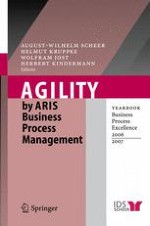Business Process Management has recently become a real "hype" topic. Too often, however, the technical aspects are being focused upon. IDS Scheer AG, leading IT and Consulting company in this business field for more than 20 years, supports a holistic approach. Business Process Management is understood to be a commercially motivated cycle which includes strategy, design, implementation and controlling. This book is dedicated to this cycle in theory and in practice, from the technical as well as the business point of view. Both, the ARIS Platform as well as the methodical approach of ARIS Value Engineering (AVE), are referred to in detail. More than half of the articles are on case studies. The book offers valuable ideas to companies on how to optimize their own business processes and thus become more competitive.
